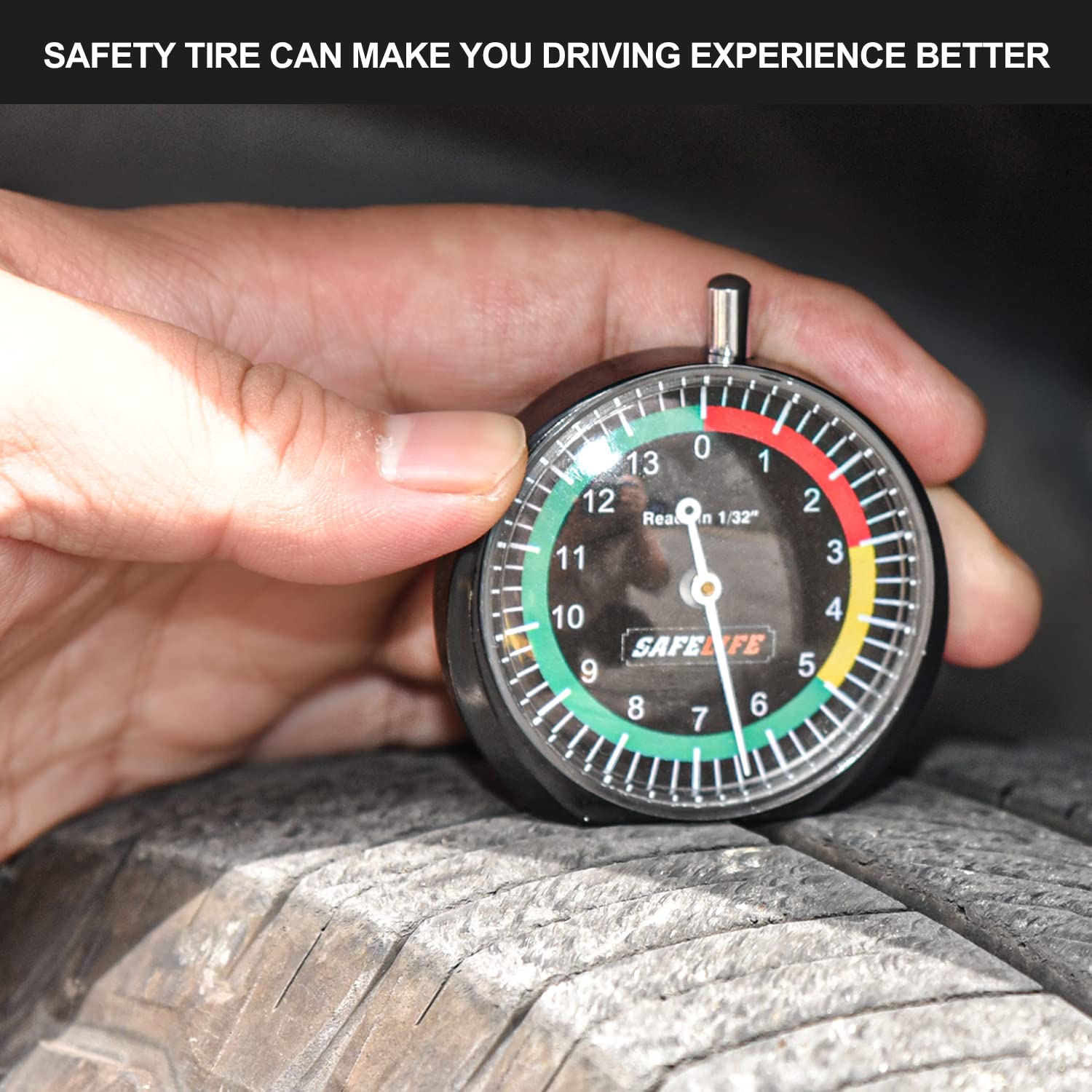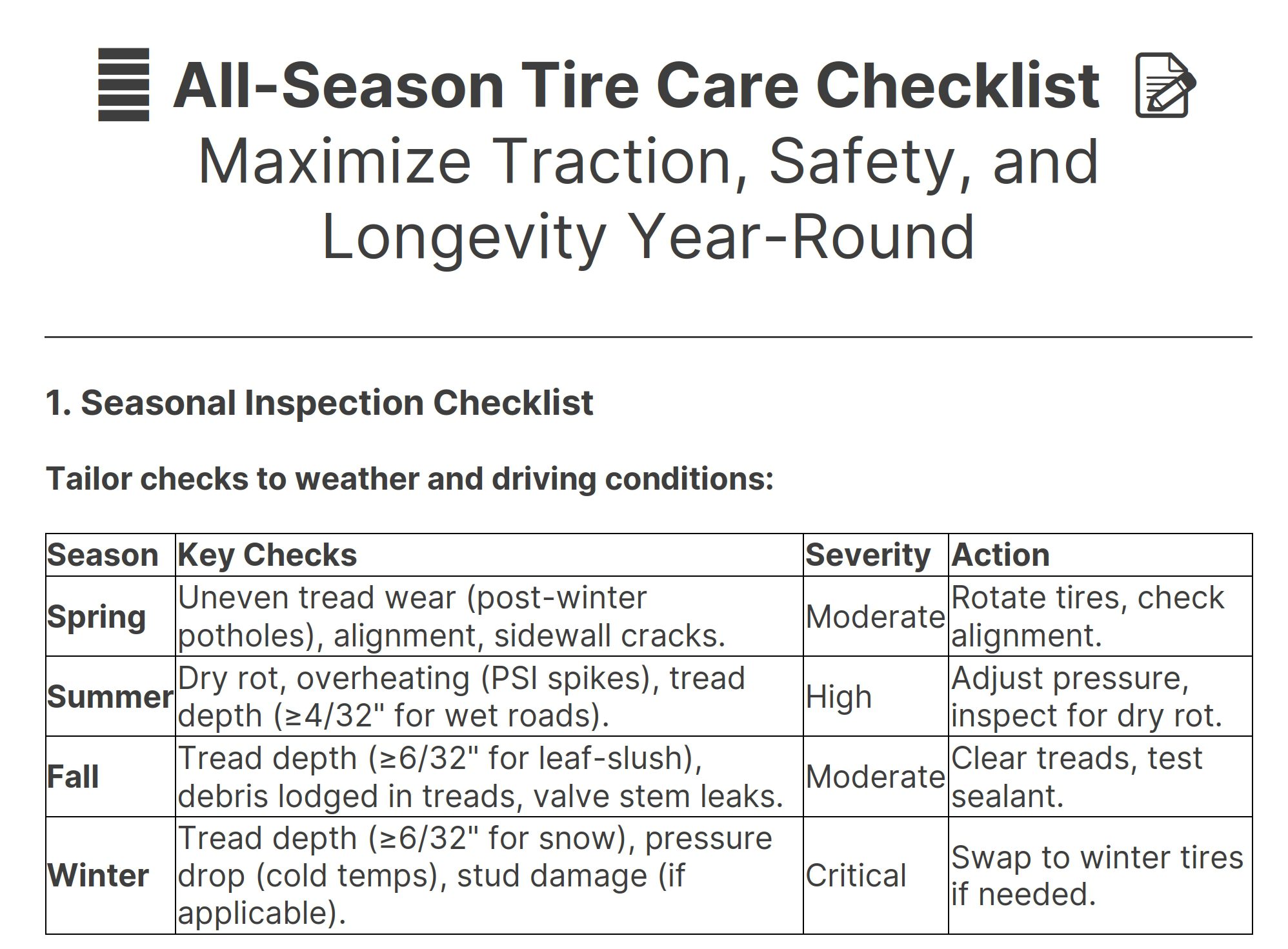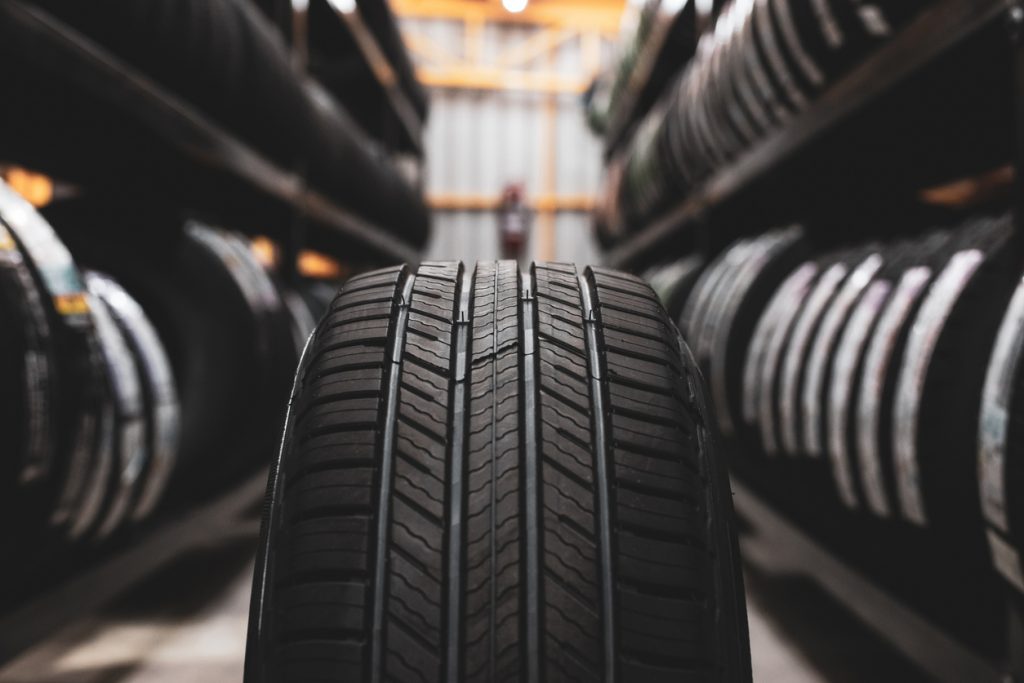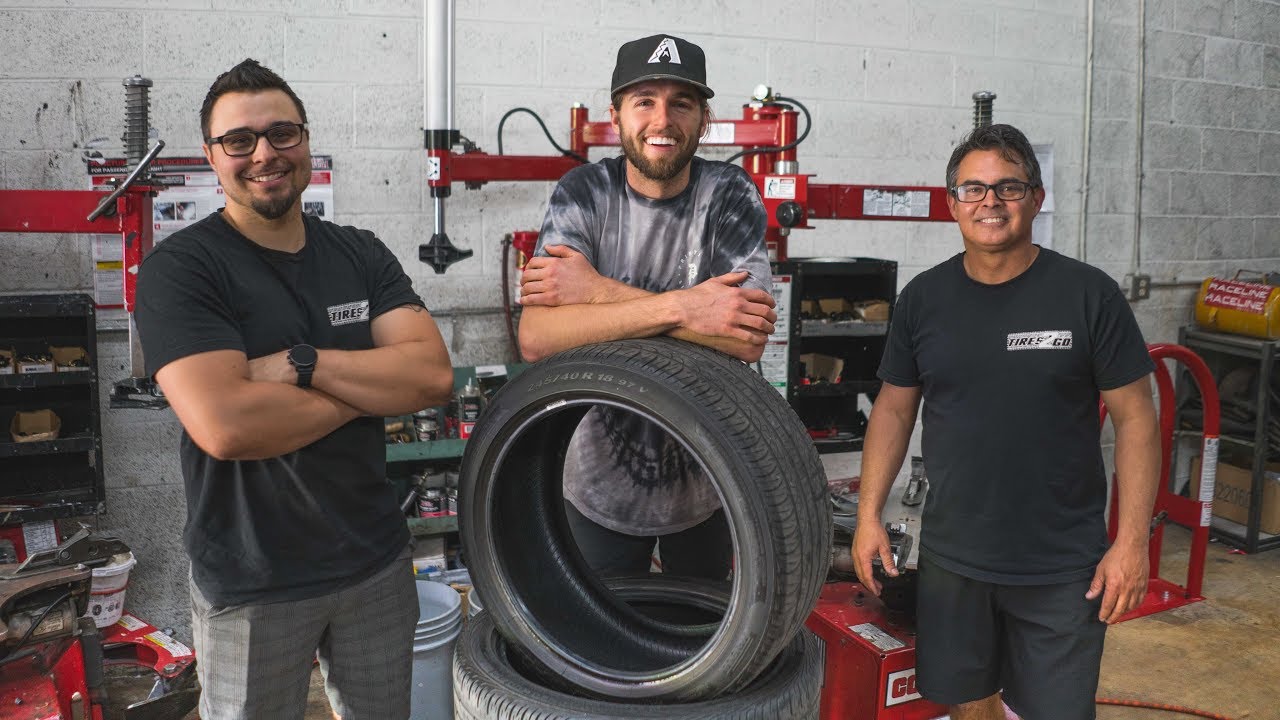Your Guide to Year-Round Safety, Savings, and Performance!
1. Why All-Season Tires Are Worth the Switch 🛞
All-season tires strike a balance between summer and winter performance, but 43% of drivers use them incorrectly or delay switching (NHTSA). Here’s why they’re essential:
- Versatility: Handle rain, light snow, and dry roads effectively.
- Cost Savings: Avoid the hassle and expense of seasonal swaps.
- Safety: 30% fewer weather-related accidents for drivers using properly maintained all-season tires (AAA).
Key Stat: All-season tires perform best in temperatures above 45°F, making them ideal for spring, summer, and fall in most climates.

2. When to Switch to All-Season Tires 📅
A. Seasonal Timing
- Spring: When temperatures consistently stay above 45°F.
- Fall: Before the first frost if you live in mild winter regions.
- Avoid Winter Use: Not recommended for heavy snow or sub-20°F climates.
B. Signs You Need to Switch
- Tread Wear: Below 4/32” (use the quarter test: if Washington’s head is fully visible, replace tires).
- Cracking/Sidewall Damage: Aging tires lose flexibility.
- Frequent Sliding: Poor traction in wet conditions.

3. Step-by-Step: Switching to All-Season Tires 🔧
A. Choose the Right Tires
- Performance: Michelin CrossClimate2 ($180/tire) – Top-rated for wet and dry grip.
- Budget: Cooper Discoverer EnduraMax ($120) – Durable and fuel-efficient.
- Eco-Friendly: Continental EcoContact 6 ($150) – Low rolling resistance.
Pro Tip: Match tires to your driving needs (e.g., highway commuting vs. off-road).
B. Prepare Your Vehicle
- Check Wheel Size: Match tire sidewall numbers (e.g., P215/60R16).
- Gather Tools: Jack, lug wrench, torque wrench, tire pressure gauge.
- Inspect Wheels: Look for bends, rust, or corrosion.
C. Installation Process
- Park Safely: On flat ground, engage the parking brake.
- Loosen Lug Nuts: Do this before lifting the car.
- Lift the Car: Use a jack stand for stability.
- Remove Old Tires: Swap one tire at a time.
- Mount New Tires: Align red/yellow dots with valve stems.
- Tighten Lug Nuts: Star pattern to 80–100 lb-ft (check manual).
- Check Pressure: Inflate to OEM specs (found in the door jamb).
4. Post-Installation Must-Dos 🧰
- Alignment & Balancing: Prevent uneven wear (80–80–120).
- Test Drive: Listen for vibrations and check steering responsiveness.
- Rotate Tires: Every 6,000–8,000 miles for longevity.

5. Top 5 All-Season Tires for 2024 🏆
| Tire Model | Best For | Price |
|---|---|---|
| Michelin CrossClimate2 | All-weather versatility | $180 |
| Goodyear Assurance WeatherReady | Light snow traction | $160 |
| Bridgestone Turanza QuietTrack | Luxury comfort | $170 |
| Pirelli Cinturato All-Season | Sporty handling | $155 |
| General AltiMax RT45 | Budget-friendly | $110 |
6. 7 Costly Mistakes to Avoid ❌
- Mixing Tire Types: Causes handling imbalances.
- Ignoring Load Index: Overloading risks blowouts.
- Skipping Balancing: Uneven wear shortens tire life.
- Using Expired Tires: Tires older than 6 years harden and crack.
- Overlooking PSI: Underinflation reduces fuel efficiency by 3%.
- Storing Old Tires Improperly: Keep them vertical, away from sunlight.
- Assuming All-Season = All-Weather: The latter has the Three-Peak Mountain Snowflake (3PMSF) rating.
7. FAQs ❓🌟
Q1: Can I use all-season tires year-round?
A: Yes, if you live in mild climates. Swap to winter tires for heavy snow/ice.
Q2: How long do all-season tires last?
A: 50,000–70,000 miles with proper care.
Q3: Are all-season tires good for rain?
A: Yes! Deep tread channels (like Michelin’s EverGrip tech) excel in wet conditions.
Q4: What’s the difference between all-season and all-weather tires?
A: All-weather tires have the 3PMSF rating for moderate snow.
Q5: Can I replace just two tires?
A: Replace all four or axle pairs to maintain stability.
8. Free All-Season Tire Care Checklist 📝
[🔗 Download Your Free PDF Here]
Includes:
- Seasonal inspection checklist.
- Tire pressure log.
- Rotation schedule tracker.

Final Pro Tips 🌟
- Check Spare Tires: Ensure they’re inflated and not expired.
- Invest in TPMS: Tire Pressure Monitoring Systems alert you to leaks.
- Go Tubeless: Fewer punctures and easier repairs.
🚗 Share this guide to help others drive smarter, not harder! 🚗
Expand Your Automotive Knowledge 📝
Explore 500+ Free Expert-Curated Guides
🚗 Learn New Skills
From basic maintenance to advanced repairs — clear, actionable tutorials for every skill level.
🌍 Access Anywhere
Mobile-friendly guides with HD visuals. No downloads required.
- Guides & Tutorials
- Car Maintenance 101
- Diagnostics & Troubleshooting
- Seasonal Maintenance
- Budget-Friendly Repairs
- Electrical Systems Guide
- Car Safety & Reliability
- Tools & Product Reviews
- Routine Maintenance
- Car Modifications & Upgrades
- Buying/Selling Guides
- Eco-Friendly Car Care
- Advanced Repairs
- Car Laws & Compliance
- Emergency Repairs
- Future Car Tech



